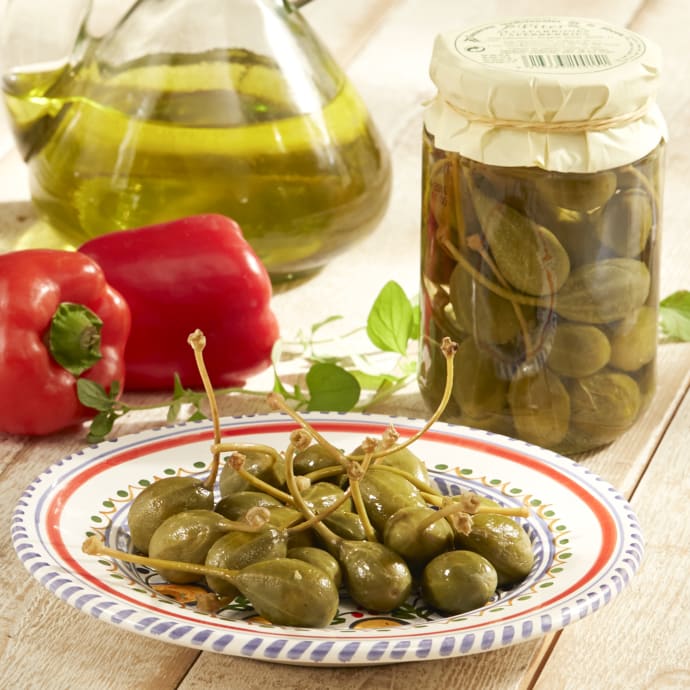Summer Savvy
PIQUILLO PEPPERS
A jar of piquillos is your passport to the exotic yet accessible cuisine of northeastern Spain. The Valentino-red pointy peppers (their name means "little beak" in Spanish) are a sweet variety with a flavor that manages to be both subtle and intense. Never eaten raw, they're roasted until tender in metal drums turned with a crank, hurdy-gurdy style, over beechwood fires. Each fall, everyone around the town of Lodosa gathers for the event; after roasting, the peppers are carefully hand-peeled to keep the flesh intact, then cored and seeded before being packed in glass jars with nothing more for company than their own juices, a smoky aroma, and errant flecks of ash. Piquillo peppers are often stuffed with salt-cod purée or ground pork. They're also pretty great on a sandwich or on nothing more complicated than toast drizzled with good olive oil. Look for them at specialty food shops or La Tienda (800-710-4304; tienda.com).
CAPER BERRIES
Odds are that somewhere in your refrigerator is a half-forgotten bottle of capers, those little bullets of bring that add a pungent, tangy note (from a naturally occurring mustard-oil compound) to everything from tartar sauce to tapenade to vitello tonnato and smoked salmon. Capers are the pickled green (unripe) buds of Capparis spinosa, a shrub that likely originated in Western or Central Asia and now grows throughout the Mediterranean. Caper berries are not larger, more mature buds but the fruit that appears after the buds have been allowed to bloom into white flowers. When pickled, the berries, which are the size of a grape and have pale streaks, are starchier than capers and generally less intense in flavor. We use them as a garnish in Bloody Marys, but you can also eat them like olives, as you would at a tapas bar in Spain. They're available at specialty food shops or La Tienda (see above).




